| 1 | The deadliest rattlesnake of all? |
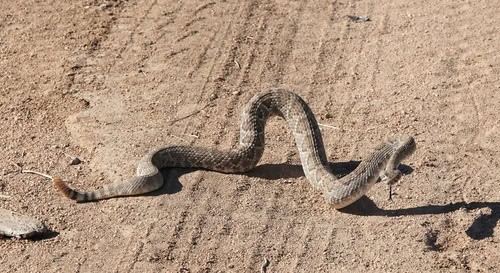
Of the 15-20 rattlesnakes inhabiting the southern USA, perhaps the most feared is the Mojave rattlesnake. This species causes far fewer bites than the west diamondback, yet is reputed to have the worst venom in the USA. The Mojave rattlesnake (Crotalus scutalatus) has unique venom for a rattlesnake, yet also one of the most mysterious, as new quirks and oddities are constantly popping up.
Rather than towns or cities, Mojave rattlesnakes are a creature of arid desert flats, the more barren the better. They typically inhabit hot deserts with sparse vegetation, such as areas heavy in creosote bushes, wispy mesquite grasses and cacti. Unlike the southwestern speckled rattlesnake, they avoid extremely rocky areas within deserts, like desert scree slopes.
This is a medium length rattlesnake. The all-time record was 137.3cm, outstripping the tiger rattlesnake at 91.2cm, but falling well short of the western diamondback rattlesnake (233.7cm), a snake they coexist with. Mojave rattlers are one of the trickiest to recognise, with no simple ID features. Scientists use a combination of alternating black-white tail rings (before the rattle begins), and a light facial stripe which doesn’t intersect with the mouth.
| 2 | Possesses a rare neurotoxin |
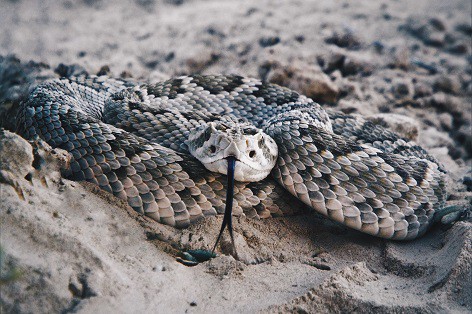
Mojave rattlesnakes are most common in southern California, Arizona, southern Nevada and northern Mexico. Since the 1930s, they’ve had a reputation as the savagest, most lethal of all US rattlesnakes. While most of the 50+ Crotalus rattlesnake family cause haemorrhaging and swelling, Mojave rattlesnakes contain the rare Mojavetoxin, a powerful neurotoxin. The species’ LD50 score is 0.18mg, compared to 2.2mg for a west diamondback and 2.6mg for a sidewinder.
Research on mojavetoxin accelerated rapidly following its initial discovery in 1975. In a 1980 study, mojavetoxin was found to be similarly structured to crotoxin, the main (and highly lethal) neurotoxin of the South American rattlesnake, one of the few other strongly neurotoxic species. Tests on mice found that mojave toxin produced an “irreversible blockade” of the diaphragm’s inflation in response to nerve signals.
When a sublethal dosage was injected into mice’ hindlegs, there was noticeable necrosis of muscle tissue after 72 hours. Postmortem of the mice’s lungs revealed numerous haemorrhages in the alveoli, the millions of tiny air spaces. Mojavetoxin seems to assault the lungs in whatever way it can.
| 3 | Bite statistics |
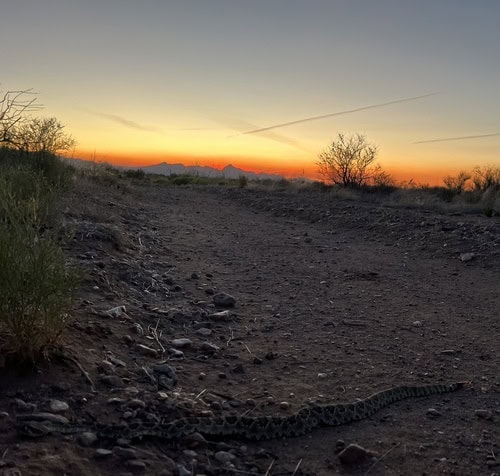
Mojavetoxin is both a pre-synaptic neurotoxin, which prevents brain signals from being issued at the source, and a post-synaptic neurotoxin, which blocks their muscular binding sites. Whether it’s black mambas, sea snakes, or Caspian cobras, the absolute deadliest snakes on Earth tend to specialise in neurotoxins.
Luckily, Mojave rattlesnakes don’t bite a vast amount of people. For example, scientists conducted a review of snakebites over 10 years in southern California, discovering 282 from one university hospital. At 87% of bites, southern Pacific rattlesnakes were easily the biggest perpetrator. Mojave rattlesnakes were way back in second, causing 5% of bites. West diamondbacks caused 3%, sidewinders 3%, and others 2%. Mojave rattlesnakes caused 10 bites overall, of which 2 were deemed “severe” and 5 “moderate”.
Estimates from southern Arizona include 60% of bites coming from western diamondback rattlesnakes, 30% from Mojave rattlesnakes, and 10% from others.
More reassuringly, Mojave rattlesnakes are one of 4 species used to create CroFab, the USA’s most widely used viper antivenom. The other 3 are the cottonmouth, west diamondback and east diamondback.
| 4 | The neurotoxin mystery |
But what if you do get bitten? On paper, C. scutulatus and the mojavetoxin it spews out are neurotoxic like nothing else. Tests on mice and pigeons reveal muscular paralysis and respiratory paralysis far outstripping other rattlesnakes. No prey can stand in its way. But whether this translates to humans has been hotly debated recently.
Exhibit A is the case of an 11 year old girl bitten in 1992, resulting in heavy neurotoxicity. Upon arrival, her breathing had failed sufficiently to require artificial intubation. This was removed at 4 hours post bite, yet the Mojave rattlesnake venom apparently resurged, as she was re-intubated at 30 hours. The girl survived, but also experienced rhabdomyolysis, the main measurement of muscle tissue destruction.
Exhibit B is completely contradictory. We have a case study of 3440 rattlesnake victims in Arizona from 1999 to 2020, which found zero cases of respiratory failure or paralysis. If the proportion of Mojave rattler bites matched the 30% above, this clearly casts doubt on their legendary neurotoxic skills. It suggests that they’re too weak to affect humans, only succeeding against smaller rodents.
Similarly, a study on 289 rattlesnake bite patients from Maricopa County, Arizona found no respiratory paralysis whatsoever. This surely included a percentage of Mojave rattlesnakes.
| 5 | Deadlier in California? |
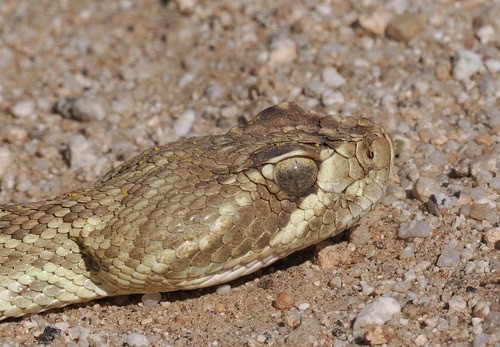
But then we have a study from southern California which showed the exact opposite. Group 1 contained 8 patients bitten by Mojave rattlesnakes, while group 2 contained 15 patients bitten by either sidewinders or Pacific rattlesnakes, which are both very weak for neurotoxins.
Overall, neurotoxic symptoms affected 6 of 8 Mojave rattlesnake victims. One man had rapid onset of respiratory failure and altered consciousness, and was placed on mechanical ventilation, requiring multiple antivenom doses. Essentially, he would have probably died without medical assistance. 2 additional Mojave rattler victims required mechanical ventilation, one falling into a coma and experiencing seizures. Others had milder neurotoxic symptoms, including uncoordinated movement (ataxia), double vision, and facial tingling.
In group 2, only one patient experienced neurotoxicity, and only then a mild tingling. There were other differences as well. 75% of the Mojave rattlesnake group experienced swelling, versus 100% of group 2. 12% of Mojave rattler victims experienced pain, versus 67% for the other rattler group. Neurotoxic snakes generally cause far fewer local symptoms (including coral snakes).
| 6 | Variable venom by region |
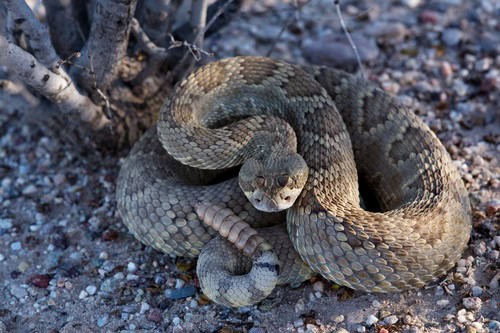
The Mojave rattlesnake is all over the place. If we believe the California study, it’s dangerously neurotoxic, whereas if we believe the Arizona statistics, it’s similar to other rattlers. The truth is exactly as it seems – Mojave rattlesnakes vary strongly by region.
It began with a 1978 report which compared Mojave rattlers from two locations. Those from southern California were found to be highly neurotoxic and lethal, capable of causing paralysis. But those from southwest Arizona totally lacked mojavetoxin, and were closer to the average rattlesnake species.
A 1983 study delved deeper, and found that within Arizona, Mojave rattlesnakes near Phoenix were haemorrhagic and milder, while those in extreme southeast Arizona were neurotoxic and far more lethal. Central Arizona had LD50 scores ranging from 2.0-6.0mg (moderate), whereas in extreme southeast Arizona, the Mojave rattlesnakes achieved 0.22-0.46mg (lethal).
Such huge variation within one viper species was unheard of, yet they were still evidently the same species, part of the same gene pool. Thus, Mojave rattlesnakes were split into type A venoms (neurotoxic) and type B (haemorrhagic) venoms, the latter specialising in metalloproteases, serine proteases and disintegrins, and being less deadly. Type B contains such toxins as mojastin 1 and mojastin 2.
It was originally believed that type B covered far less territory than type A, yet new locations continued to appear. In 2014, the Comarca Lagunera of Mexico’s Chihuahua desert was tested. The Mojave rattlesnakes here clearly fit the type B profile, with barely any mojavetoxin. But other mojave rattlesnake colonies in Mexico have been shown to have type A venom.
| 7 | Every location may vary |
The deadliness of this snake may be incredibly specific to certain counties or even patches of scrubland, and you can’t apply a broad brush state approach. Over one rocky desert ridge, a ridge which humans can scramble over, but naturally divides snake populations, the Mojave rattlers could suddenly gain deadly new powers.
All Mojave rattlesnakes may possess the necessary genes for one toxin profile to take precedent, if certain circumstances make them necessary. With such a vast range across the southern USA, it’s impossible to test every micro region, every picnic area by a highway, every arid campsite, every desert flat. Even worse, there’s a few areas where they intergrade and become “type A + B”. They become your worst nightmare, a Mojave rattlesnake wielding all the neurotoxins and all the haemorrhagins available from its genetic code.
That said, Arizona seems to favour type B, and California seems to favour the neurotoxic type A. Therefore, we have a clear answer as to why the huge Arizona rattlesnake review found no cases of respiratory failure, while the California study on just 8 victims found that neurotoxicity affected 6 (75%). The results were too disproportionate not to have a solid explanation somewhere.
| 8 | Diet: mammals then lizards |
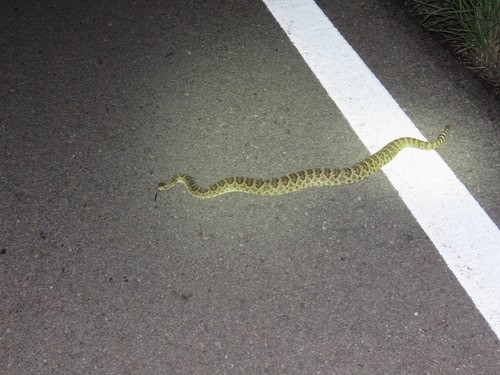
Mojave rattlesnakes have a typical rattlesnake diet: mammals predominating with lizards as a backup. An old 1956 report from Klauber found mammal remains in 21 Mojave rattlesnakes, and lizard remains in just 2. However, one Mojave rattlesnake ate a leaf-nosed snake while being carried in a collector’s bag.
A 1982 study examined 47 Mojave rattlesnakes and found no lizards, only mammals. The study was conducted along a road in Chihuahua, Mexico, and recorded many species. Merriam’s kangaroo rats dominated, followed by silky pocket mice, spotted ground squirrels, and banned-tailed kangaroo rats. They also measured the overall abundance of the mammals, and found that Crotalus scutulatus ate them in proportions far outstripping their availability.
Finally, a 2003 study attempted to compare type A (neurotoxic) Mojave rattlers to type B (less lethal). The results weren’t conclusive, but while both feasted on mammals, the type A forms included significantly more lizards. It’s possible that diet has a connection to the expression of toxins in certain locales. Perhaps lizards are faster and more darting, making paralysing neurotoxins more logical. Then again, mice are also fast and darting. Maybe differing predators are the reason. The reason why some Mojave rattlers are so much deadlier remains a mystery.
| 9 | Nemesis: California kingsnake |
As for their own predators, scientists examined the stomachs of 144 coachwhips from museum collections. They found rattlesnakes in 2 coachwhips, and one was identified as a Mojave rattlesnake, based on its alternating light-dark tail rings and location.
In 2018, a giant study on 2662 California kingsnakes found that snakes contributed 29% of their diet by headcount. Pacific rattlesnakes were easily more common at 17 items, but Mojave rattlesnakes were recorded twice in their diet. The Mojave rattler’s greatest fear is a creature with complete resistance to its venom.
Unlike the jararaca of Sao Paulo, Mojave rattlesnakes apparently aren’t the most accurate viper. In a 2017 study on their favourite prey, Merriam’s kangaroo rats, they made repeated failed strikes, caused both by the high manoeuvrability of the mammal, and simple misses. The Mojave rattlesnake was still patient, launching its strike at distances of just 4.6cm to 20.6cm.
| 10 | Resistant to cold temperatures |
As reptiles, all snakes are cold-blooded, incapable of generating their body heat. During colder temperatures, they generally slow down, and this is particularly relevant to Mojave rattlesnakes, given that they live in deserts, where temperatures can plummet under clear skies at night.
Scientists from San Diego State University exposed Mojave rattlesnakes to simulated threats, to test how fast they unleashed a defensive strike. A balloon filled with warm water was the “threat”, and at 35C, the Mojave rattlers were “extremely fast, making them very difficult to corral“. The team’s hypothesis was a 50% decrease in strike speed for every ten degrees lost, but the rattlesnakes lost much less speed than they anticipated. At the lowest temperature tested, Crotalus scutulatus only lost 25% of its speed.
The Mojave rattlesnake far outperformed their expectations, remaining a threat at all temperatures. Essentially, an Arizona desert at night is almost as dangerous as during the day – more so considering that your visibility is reduced. Vipers are the most cold-resistant snake family in general. The European adder is the most northerly snake on Earth, reaching northern Sweden, while Canada boasts 3 rattlesnakes. Even rattlers from scorching climates like the Mojave apparently possess some cold resistance.
